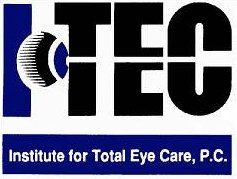In-Office Surgery
In-Office Surgery
In-Office Surgery
We provide the latest in conventional and laser surgical technology. Our in-office surgical suite, YAG, Argon, and SLT lasers allow us to perform minor surgical and laser procedures without the difficulty of being admitted to an outpatient facility or hospital.
Below is a brief list of in-office procedures available:
*After cataract laser surgery
Occasionally after a patient has had cataract surgery, a cloudy film or membrane may form behind the artificial lens implant. This cloudy film is termed a “secondary membrane” or an “after cataract.” In past years when these membranes became cloudy enough to impair vision, the eye care professional’s only alternative was to cut the membrane with a very tiny surgical knife. This required another visit to the operating room. Now, however, a laser technique called YAG laser has been developed to cut open this secondary membrane in the doctor’s office. Thus, if you experience impaired vision after cataract surgery, the YAG laser may promptly restore your vision without a risk of bleeding or infection inside the eye.
*Glaucoma laser surgery
Glaucoma is damage to the optic nerve caused by a variety of ocular conditions usually involving increased pressure in the eye. In-office surgery can be performed on those patients who have been diagnosed with either open angle or angle closure glaucoma, each of which may respond to different forms of laser treatment.
Typically patients are initially treated with eye drops to lower the pressure inside the eye. However, some patients may be candidates for a laser procedure to lower the pressure. Laser procedures for glaucoma have been performed for decades. A new type of laser procedure called Selective Laser Trabeculoplasty (SLT) is now available at ITEC to treat glaucoma. SLT is performed in the office and only takes minutes to do. There is minimal discomfort involved and the patient returns home within a few minutes with no restrictions. Typical results show a decrease in pressure by 25-30% within a few weeks. Unlike previous glaucoma lasers, SLT may be repeated if the pressure in the eye were to increase again.
*Diabetic and retinal laser surgery
Diabetic retinopathy involves either leakage from the tiny blood vessels or new blood vessel growth in the nerve layer of the back of the eye (the retina). Both conditions may lead to significant visual loss or blindness, especially if untreated. Unfortunately, symptoms are often minimal until the damage is severe. ITEC physicians are well trained in the diagnosis and treatment of such conditions. Many times a laser procedure may be performed to halt the bleeding and blood vessel growth and limit the damage from diabetes. These laser procedures are performed in the office and patients return home immediately after surgery.
*Eyelid lesion removal and eyelid repair
Many patients present with bothersome lesions around or near their eyes. While most doctors are hesitant to tackle lesions so close to the eye, ITEC professionals are comfortable with the removal and repair of such lesions. Most procedures can be performed in the office under local anesthetic with the patient returning home a few minutes after the surgery.

